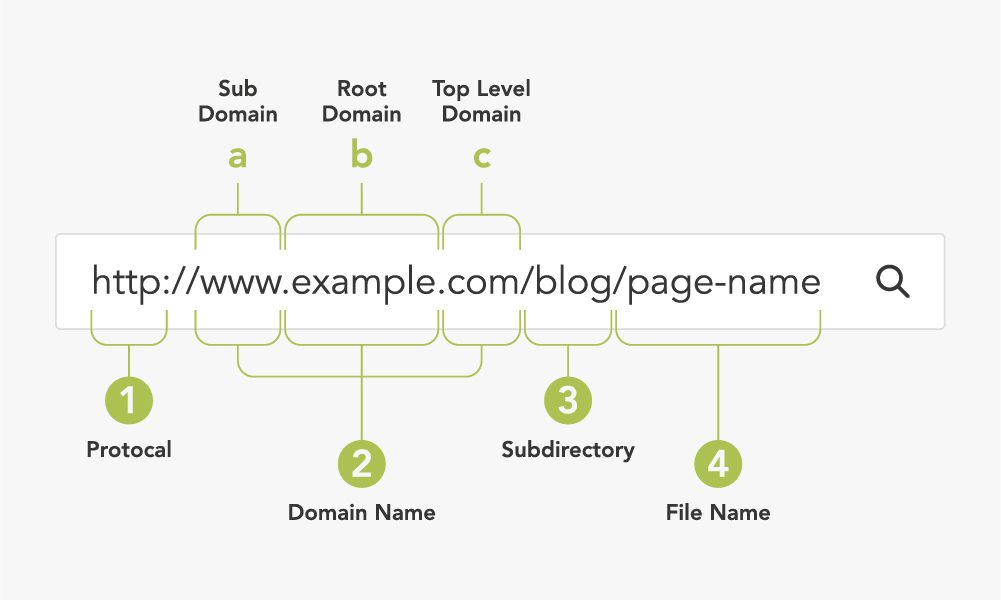6 mins
Subdomains vs ccTLDs: Which domain strategy is best for international expansion?
Essential to international SEO success, the right website domain name structure will help you target international users, and appear higher up on regional search engine results. But which is best?

by Matthew Finn
4th November 2019
So, your business is looking to break into the global marketplace. World domination is on the agenda, and you’re ready to take the necessary steps to reach international audiences online. For your global venture to succeed, it’s essential that your website is optimised for each of your target audiences.
Using the same UK website when targeting a foreign audience will not cut the mustard. As you begin to target other locales, basic factors like accurately translating copy and converting pricing into the relevant currency should be immediate priorities. Later, once the basics have been completed, you can start to think about creating native content for international audiences. But before going ahead with any of this, you’ll need to make some complex site architecture decisions.
Optimising your site for international users goes beyond simply changing your site language. Careful thought needs to go into the structure of your website and its domain in particular. You need to be certain that users from your primary country don’t accidentally find their way onto a translated version of the website that they don’t understand. And it’s not just the user you need to be mindful of. Not having a clear domain strategy in place could also inadvertently damage your search presence if your translations begin to outrank your primary content.
Search engines need to clearly understand which version of a website should be delivered in search results for different users. Known as geo-targeting, this not only creates a better user experience for visitors, but enables search engines to identify which countries you’re targeting, and the languages your site is using.
A domain name is your web address, which communicates to both Internet users and search engines who you are—think of it like a storefront sign which marks your business online. It is structured in at least two parts: the root domain (usually your company name), and the top-level domain (TLD). This is the suffix marking the end of a web address, such as .com or .org. TLDs are unrelated to the company itself, although they can show what type of website it is or give an indication into where the business is based.
Many websites use a .com TLD, known as a generic top-level domain (gTLD). But this isn’t the only way to structure your domain. Other domain name structures may have country-specific suffixes instead, or a subdomain at the start of the address as well.
To successfully target users from different countries, it’s important that your domain structure is unmistakably aimed at them. While a simple .com domain name structure is desirable, it gives no indication who your site is for. In order to effectively target users from different countries, you’ll need to alter this structure to signify the country and/or language your site is targeting to users and search engines. This involves changing, or augmenting, the TLD.
So which domain name structures might you choose to use and which are the most effective? There are three main domain strategies that you can use target international audiences. We’ve analysed each of them below to help you decide which is best for your business.
Top-level domains that are specific to a country or region—such as .fr for France and .es for Spain—are called country code top-level domains (ccTLDs). However, the waters around ccTLD geo-targeting are becoming muddied with TLD trends. For instance, .io is assigned to the British Indian Ocean Territory, but many tech companies now use this as a gTLD. As a result, Google has started to consider some ccTLDs as gTLDs.
Pros:
- Having a country code in the domain will make it obvious to many visitors that your site is aimed at them, which helps to build brand trust in target locales and improve click-through-rate.
- A ccTLD domain name structure suggests to search engines that your site is targeting a specific country. Google has stated that it uses ccTLDs to determine geotargeting.
- In some markets, local ccTLDs perform better than non-localised domains. In extreme cases, only local ccTLDs are displayed in search results, such as in China where the popular search engine Baidu only shows Chinese ccTLDs.
Cons:
- While a ccTLD domain signals to Google to rank your site in a particular country, it might not rank in other nations using the same language. For instance, a .fr domain suggests a website is for people in France, not those from other Francophone countries like Belgium and Switzerland.
- A ccTLD approach can be expensive. If you wanted a co.uk domain, you’d only have to pay an annual fee of around £5. Yet, to launch your business in Puerto Rico, for instance, you’d need a .pr domain, which costs about £800 a year! What’s more, if you wanted to target 20 different countries, you’d theoretically need 20 different ccTLDs.
- Updates on one site wouldn’t automatically update on each country-specific domain, as they are all separate sites. This extends to SEO – the authority of one ccTLD is not shared with another ccTLD.
- When you launch in a new market and acquire a new ccTLD, that domain would have no pre-existing authority or links meaning you’d have to effectively start from scratch. As a result, it may take some time before search engines view the site as a trustworthy and authoritative site to rank well in search results.
Subfolders or subdirectories for specific countries or languages can be added to your current domain like this: www.yourdomain.com/fr. However, for this to be most effective, your site needs to have a gTLD such as .com.
Pros:
- Your SEO efforts would benefit each country or language folder, as they’re all part of the same site. This differs from ccTLDs, where each country domain is a separate website.
- A subdirectory approach would retain the existing authority of your website, meaning you wouldn’t have to start from scratch when expanding into new territories—one less thing to worry about during your international venture.
- Links between different folders are seen as internal links rather than external links. This would be highly beneficial to your backlink profile, as it would be predominantly made up of links from other websites.
- This is a cost-effective approach, as you wouldn’t have to splash out on hundreds of different domains for each country you’re targeting.
Cons:
- Users may not think subfolders are targeted at them. For instance, searchers may assume www.yourdomain.com/es is a page about Spanish products rather than a page specifically for Spanish users.
- Unlike ccTLDs, search engines do not automatically associate subfolders with the target country. As a result, you may find it harder to acquire traffic from that region. However, this can be solved using the international targeting tool in Search Console. For instance, if Go Up had a subfolder aimed at the German market, we could submit goup.com/de as a property and make the international targeting “German”.
- Country or language subfolders risk causing internal cannibalisation. In this scenario, different international landing pages would be competing with each other for the same keywords in search results. If multiple pages are optimised for the same keyword, search engines won’t know which page is most relevant for a certain query. As such, cannibalisation can make it hard to get the right page ranking in a particular country’s SERPs. This can be tackled using hreflang tags, but this adds an extra dimension of technical SEO that would be required.
Subdomains feature the targeted country at the start of the domain (es.yourdomain.com). As with subfolders, this only works if your site has a gTLD.
Pros:
- This is the default for some CMS tools, making it a simple and cost-effective method of targeting international markets.
- Subdomains have some connection to the SEO authority of your main website, meaning they will be seen as trustworthy by search engines.
Cons:
- As with a ccTLD structure, links to subdomains from language drop-downs are considered external links, which could again compromise your backlink profile.
- Without a ccTLD, search engines wouldn’t automatically associate your site with the country you’re targeting. However, as with subfolders, you can use Search Console’s international targeting tool to get around this.
- Users would also be much less likely to associate your site with their country, and may not understand or recognise the domain. Consequently, trust and click-through rates may take a hit.
- Subdomains can also run the risk of internal cannibalisation. This is because search engines usually only feature one subdomain from a site in their SERPs, so different international versions may end up competing with each other for the same search terms, particularly if they have content gaps or the languages overlap.
There are clearly advantages and disadvantages for each domain name structure. The best way to decide what will work best for your business is to consider the elements we have outlined below, and discuss them with an SEO agency:
- Brand compatibility: If your company has a logo which features your domain, or brand guidelines which stipulate talking about your business as YourBrand.com, then a ccTLD wouldn’t work.
- Competitor strategies: Pay attention to the domain structure of any competitors performing well in the SERPs of your new target countries. This approach may also work for you.
- Budget considerations: If you’re a small startup aiming to expand into 14 new markets, a ccTLD structure may not be the most affordable way forward, even if it is the most effective domain name structure.
- Market limitations: Sometimes choosing a domain strategy and applying it to every target market is counterproductive. For instance, it might be preferable to use a ccTLD strategy for some markets, while a .com subfolder strategy might be more effective in others.
- CMS limitations: Not all CMS are made equal. It’s important to assess whether your CMS can support all of the technical SEO associated with international domain strategies.
There is no one-size-fits-all approach to online international expansion. Moreover, choosing the most appropriate domain structure is only the first hurdle to tackle. We’ve only scratched the surface in this article, but the SEO team at Go Up is always happy to discuss international SEO strategies and help to elevate your business in a new market.


 The top-level domain and subdomain are two of the most important considerations when expanding a website internationally.
The top-level domain and subdomain are two of the most important considerations when expanding a website internationally.